

Agridisk
Egypt - Alexandria

Best laying hens for eggs & What makes chickens lay more eggs?
Description: The fascinating world of laying hens can intrigue both the budding poultry keeper and seasoned veterans alike. This comprehensive exploration takes a plunging dive into the intricacies of hen behavior and its impact on egg production. Ranging from their unique social dynamics, roosting habits, and laying patterns, we shed light on what makes each breed of hen different and how their characteristics can affect their egg-laying efficiency. Further, we identify high-producing breeds, delving into their specific traits and adaptability to diverse environments. Offering a holistic view on this subject, we will also guide you comprehensively on how to care for these wonderful creatures to ensure they are at their productive best. Last but not least, we will equip you with tested strategies that can maximize egg production to give you the most out of your poultry farming experience. The world of backyard hens is as fascinating as it is rewarding. As rustic companions, they contribute to the rhythm of day-to-day life, contributing their delightful "cluck-cluck" to the dawn chorus. But what makes them truly marvelous is their incredible egg-laying ability. So, when choosing your hens, the question emerges - what type of behavior should we expect from top-notch egg-laying hens? Firstly, it's critical to know that a superb egg-laying hen displays strong, consistent patterns of behavior. If you notice they're in the coop's nesting area often, that's a positive signal. Top egg layers frequently spend a significant amount of time in the nest box. It's here they create a cozy space to lay their eggs, shifting around straw with dedication and care. Top-notch egg-laying hens also reveal a certain audible contentment. They possess a unique clucking pattern announcing their successful egg-laying endeavor. This excited, sprightly clucking chorus is termed the "egg song". This joyous chorus among hens signals effective egg-laying activity. Additionally, it's essential to monitor the eating habits of an excellent egg-laying hen. Egg production demands a high-energy diet, so these hens are often found near the feeder. A robust appetite frequently correlates strongly with proficient egg production. Physical activity is another important behavior characteristic of prolific egg-laying hens. These birds are frequently on the move, exploring their surrounds, dust-bathing, and foraging. A more active hen is typically a healthier one, leading to more consistent egg output. Another critical aspect you might notice is that these hens tend to be social creatures. Interacting positively with other hens in the flock often indicates a relaxed hen that lays eggs consistently. They usually fall into the middle of the pecking order, being neither the dominant boss nor the shy outsider, maintaining harmony in the group, which is critical for egg production. Lastly, look for consistency in their egg-laying schedule. Top egg layers usually stick to a stable routine, laying their eggs at approximately the same time each day. Irregular timing could indicate health issues, stress, or other concerns that might interrupt regular egg production. Remember, egg-laying hens are, above all, living creatures deserving of care and respect. From providing a nutrient-rich diet to creating a secure, comfortable environment in the coop, fostering these behaviors is about more than just the eggs—it's about nurturing happy, healthy hens. Mastering the art of keeping hens and understanding their behavior are part of an extraordinary hobby that brings joy (and eggs) to everyday life. So, we've talked a lot about what makes a chicken a good egg layer. You've got your behavioral signs, eating habits, physical activity, social interaction, and of course, a consistent laying schedule - all set in place with optimal care and respect given to our feathery friends. It's time to crack the code and move on to discussing top breeds that are known for their egg production. First off, let's start with the Rhode Island Red. Famed for their hardiness, dual-purpose capabilities, and rich, dark brown eggs, these birds certainly hold an elite status among poultry enthusiasts. Reds are fascinating and are often lauded for their impressive egg yield of approximately 200 to 300 eggs each year. Next in line is the legendary Leghorn. Italian in origin and made famous by the beloved cartoon character, Foghorn Leghorn, this breed is an egg-laying marvel. Leghorns are typically white and are heralded for their prolific egg production, clocking a remarkable capacity to lay upwards of 280 large, white eggs per year - a definite powerhouse in the egg-laying field. But it's not all about the Reds and the Leghorns. Let's not forget the Sussex breed. Originating from England, these docile and friendly birds are known for their profound egg-laying abilities, producing up to 250 eggs annually. Sussex chickens possess a dual-purpose nature and are cherished for their egg-laying prowess and meat. Fourth on our list is the Plymouth Rock, also known as the Barred Rock. These American breed chickens are revered for their egg-producing efficiency and hardiness, making them an excellent choice for beginners. Plymouth rocks are known to lay roughly 200 medium to large, brown colored eggs each year. Last, let's give a nod to the superstar of egg production, the Hy-Line W36. This commercial laying breed is known for its exceptional egg-laying capabilities, with it being possible for them to lay over 320 eggs per year. These brown-egg layers are not just prolific but also very efficient, requiring relatively less feed compared to other breeds. Whether you opt for the resilient Rhode Island Red, the magnificent Leghorn, the charming Sussex, practical Plymouth Rock, or the hardworking Hy-Line W36, the choice isn’t easy. Your hen's ability to lay abundantly depends on many factors, including their breed, environment, diet, and care. By understanding the characteristics of these lucrative egg-layers, you've marched one step closer in your quest for your ideal backyard flock. Happy hatching! Let’s converse about a few other key, yet often overlooked, aspects of chicken care that contribute significantly to successful egg production. First up, do pay heed to dietary requirements. Though hens are not finicky eaters by nature, they do have specific dietary needs for optimum health and egg-laying prowess. A complete layer feed is recommended, ensuring your hens get necessary proteins, vitamins, and minerals. Supplement their diet with treats like fruits, vegetables, and grains, but remember, these should only form a minor part of their diet- not more than 10%. A critical part of diet, often taken for granted, is Calcium supply. Hens require calcium for producing eggshells. Provide a constant supply of oyster shell or crushed eggshells in a separate dish so hens can consume as necessary. Without adequate calcium, egg production may reduce, and shell quality can deteriorate. Water is another vital element. Hens need a constant supply of clean, fresh water for maintaining body temperature, assisting digestion, and, you guessed it, producing eggs! Ensure they have access to ample water, especially in warmer conditions when dehydration can occur. Let's move to housing, where the adage “cleanliness is next to godliness” holds. Keeping the coop clean not only keeps diseases and predators at bay but creates a cozy environment for your hens. Replace bedding regularly and ensure nest boxes and perching areas are kept tidy. Hens are fond of cleanliness; they most certainly will reward you with consistent egg-laying habits. Remember adequate space! Hens require enough room to stretch, flap their wings, bathe in dust, and simply be chickens. Overcrowding could lead to stress, diseases, and a disruptive pecking order- all detrimental to egg production. Proper lighting is essential too! Chickens need light cues to lay eggs. Sixteen hours of light stimulates the laying process and contributes to enhanced productivity. This can be achieved naturally in the summer months but for winter, supplemental light may need to be provided within the coop. Lastly, keep a keen eye out for potential diseases or predators, which can impact egg production significantly. Spot the signs of sick hens early by observing changes in behavior, eating habits, or the appearance of the flock. Regular veterinary care and preventive measures like proper fencing can aid in this. If you want to be the proud carer of a flock of proficient egg-laying hens, these tips are your roadmap. Happy hen-keeping! Diving further into the treasury of chicken tending, it's crucial to explore how alterations in the coop environment can impact egg production. Just like us, our feathered friends also react to changes around them, and sometimes, the smallest tweaks can yield extraordinary results. Introducing nesting herbs such as lavender, chamomile, peppermint, or lemon balm into the nesting boxes can create a calming environment for the hens. These herbs are also known to have pest-repelling properties, keeping mites and other pests at bay. The idea of pleasant-smelling nesting boxes is not just exciting for chicken-tenders, but also a key to keeping hens comfortable and content, thereby promoting consistent egg laying. Adjusting the coop's temperature is another handy method, as it's well established that hens prefer a consistent climate for optimal egg production. Generally, hens are comfortable in temperatures between 45 and 75 degrees Fahrenheit. Too cold, they may redirect their energy from egg production to staying warm. Too hot, and it can cause them stress. An insulating layer in the coop for winters and proper ventilation for summers can help maintain the temperature within this range. Furthermore, introducing roosters to the flock may also spur egg production. While roosters are technically not a 'necessity' for hens to lay eggs, their presence can actually stimulate a more persistent egg laying routine. Plus, roosters help maintain order within the flock, providing a sense of stability for the hens. Slightly advanced, yet an effective aspect to boost egg production, is leveraging permaculture design principles. Establishing a chicken "salad bar" with a diversity of forage like greens, flowers, seeds, and berries not only keeps hens well-fed but also entertained and mentally stimulated. Correspondingly, an entertained hen is a happy hen, and a happy hen lays eggs consistently. Safeguarding the flock from stress is paramount as it directly impacts egg production. A chicken guardian, like a dog trained specifically to protect livestock, can help keep predators at bay. Additionally, frequent health checks by a qualified vet can identify early signs of diseases or pests, ensuring the hens stay healthy for continuous egg production. Last but not least, the importance of consistency can’t be overstated when working with animals. Similar to the already established routines of feeding, lighting, and egg collection, maintaining regular interactions with the flock can foster trust and reduce stress levels amongst the hens. With these additional nifty tips, not only can hobbyists increase egg production but also build a closer bond with their feathered friends. After all, egg farming isn't just about cracking open a fresh egg every day, it's about creating an inviting and caring environment for those tireless little cluckers. Understanding the complexities of laying hens, identifying top-producing breeds, and employing effective care and production strategies will inevitably lead to a successful venture into chicken keeping. Each breed brings its unique blend of characteristics and adaptability, all deeply intertwined with their highest potential of laying eggs. Combining this knowledge with tailored care methods and effective production strategies will allow your laying hens to thrive in their environment and deliver egg production at its finest. Remember, the best egg-laying hens are those well-understood, lovingly cared for, and optimally managed, which ultimately fosters a win-win situation for both hens and chicken keepers. The quest to maximize egg production in laying hens is a multi-faceted endeavor that extends well beyond the simple provision of shelter and feed. It demands a thoughtful intertwining of science and husbandry, embracing areas ranging from precise nutritional intake to sophisticated genetic selection. By dissecting the intricacies of diet and environmental manipulations, exploring cutting-edge health management techniques, and tapping into the inherent genetic potential of these birds, this essay aims to shed light on the myriad of factors that coalesce to influence egg laying performance. As we embark on this investigative journey, we are reminded of the delicate balance between quantity and quality, and the central role of animal welfare, which is not merely an ethical imperative but also a cornerstone of productive farming practices. In the pursuit of enhancing egg production within the realm of poultry farming, understanding the fundamentals of avian nutritional requirements is paramount. Poultry, particularly laying hens, necessitate a finely balanced diet to sustain their high rates of egg production. To foster such a productive environment, there are several dietary components that must be provided in adequate amounts. Proteins are the building blocks of life, and this is no less true for poultry than it is for other organisms. A diet that is rich in protein, specifically one that provides essential amino acids, underpins robust egg production. Lysine and methionine are among the most critical amino acids for egg-laying hens. The incorporation of soybean meal and other high-quality protein sources into feed is thus essential for sustaining egg production and quality. Energy demands constitute another critical aspect of the diet for poultry. Carbohydrates, often sourced from grains like corn and wheat, are primary energy suppliers in poultry diets. It is essential to calibrate the energy content of the feed to balance the hens' activity level and production status, as both over- and underfeeding can lead to decreased egg output and adverse health effects. Calcium, a mineral with profound implications for bone health and eggshell integrity, must be abundantly available in the diet of egg-laying hens. Oyster shells and limestone are common additives used to ensure that calcium levels meet the hens' physiological requirements. Additionally, phosphorus must be present, but in a balanced ratio with calcium to prevent metabolic disturbances. Vitamins also play integral roles in poultry health and egg production. Specifically, Vitamin D is vital for calcium absorption, while other vitamins like A, B12, and E are necessary for reproductive health and the avoidance of embryonic abnormalities. A well-formulated diet or a vitamin premix is often used to ensure that laying hens receive adequate levels of these essential nutrients. To sustain water balance and biochemical processes, electrolytes such as sodium, chloride, and potassium are indispensable. These are generally provided adequately through the feed, although additional supplementation can be necessary under conditions of stress or high temperatures. It is imperative to consider that feed intake itself can be influenced by numerous factors including hen breed, environmental conditions, and the palatability of the feed. This in turn affects the nutrient intake and overall production capacity. Hence, constant vigilance in diet formulation and feeding practices is vital for the attainment of peak egg production. In conclusion, the conscientious provision of proteins, energy, minerals, vitamins, and electrolytes in appropriate quantities and ratios is the bedrock upon which successful egg production in poultry rests. Understanding and meeting these nutritional demands results in a thriving poultry population with optimal egg output. As we consider the intricacies of egg-laying performance in chicken, it is not only the biochemical constituents of their diet that warrant our attention but also the broader environmental and housing conditions. These conditions play a pivotal role in chickens' physiological well-being and consequently influence egg production. Environmental conditions for chickens encompass the climate in which they live, including temperature, humidity, and light exposure. Optimum temperature regulation is essential as extreme heat or cold stress can reduce feed intake, lower egg production, and lead to poor egg quality. Chickens are homeothermic animals; hence, maintaining a steady temperature within their living environment is crucial for maintaining metabolic processes that contribute to optimal egg-laying performance. Correspondingly, an appropriate level of humidity in chicken housing is vital. Excessive humidity can exacerbate stress conditions and facilitate respiratory diseases, while too low humidity levels can impact egg weight loss and cause dehydration, hindering overall performance. An often-underappreciated aspect is light exposure. Poultry are photoperiod-sensitive, meaning the amount and duration of light they receive influence their reproductive cycle. Managing light schedules is a practice that syncs with the chickens' natural biological rhythms, stimulating egg production by coordinating ovulation cycles. Turning to housing conditions, space allowance and densities within enclosures are factors that directly influence stress levels and social behavior among chickens. Overcrowding can elicit a stress response, leading to aggressive behaviors and pecking, which may reduce egg production or cause injury, thus lowering egg yield and quality. Ventilation must not be overlooked, as it is paramount to remove excess moisture, ammonia, and other gases, thus ensuring proper air quality. Poor ventilation can lead to respiratory issues and compromise the health of poultry, which naturally affects egg-laying efficacy. The design of housing also has a direct impact on egg production. Nest box availability and the comfort they provide have been shown to influence the number of eggs laid. There exists an optimal balance between privacy and accessibility that encourages hens to lay their eggs in a secure environment, preventing floor-laid eggs and thus reducing breakages and contamination. Sanitation practices are a cornerstone of maintaining good health and preventing the spread of disease within a flock. Regular cleaning of housing facilities, along with safe waste management and rodent control, maintains a disease-free environment conducive to steady and high-quality egg production. Finally, the integration of welfare-friendly practices within the housing environment, including access to natural behaviors such as foraging and perching, can contribute to better health and thus positively affect egg-laying performance. The inclusion of welfare-driven practices is increasingly recognized as an integral aspect that supports both ethical farming and productivity. In conclusion, the multifaceted interplay between environmental factors and housing conditions within the realms of chicken farming necessitates diligent management for the prosperity of poultry well-being and egg-laying efficiency. Through a combination of climatic control, appropriate housing design, light management, and the acknowledgment of animal welfare, one can create an optimal setting for sustained egg production. Environmental conditions exert a notable influence on the performance of egg-laying hens in poultry production systems. The ambient elements within the hen's habitat—including temperature, humidity, and light—must be scrupulously regulated to maintain high rates of egg production and ensure the production of superior quality eggs. Temperature regulation is critical, as deviations from the optimal thermal range can impact feed intake and metabolic rates, thereby directly affecting egg production. Indeed, extreme temperatures may precipitate heat stress or cold stress, which in turn can compromise egg output and quality. However, there is an intricate balance to be maintained, as excess heat can diminish appetite, while excessive cold might lead to an increased caloric demand to maintain body temperature, diverting energy away from egg production. Humidity levels also play a pivotal role in the health and productivity of poultry. High humidity paired with elevated temperatures can exacerbate heat stress, while low humidity might contribute to respiratory issues. Conversely, optimal humidity levels aid in the prevention of stress and respiratory diseases, which can lead to improved performance in egg production. The nuanced sensitivity of chickens to photoperiods— the durations of light and darkness—must also be considered. The manipulation of light exposure can be deployed to synchronize and optimize the reproductive cycle, ultimately influencing the frequency of egg-laying. It is essential to provide a harmony between the duration and intensity of light to avoid causing undue stress on the hens. Furthermore, the design and quality of the housing environment have significant ramifications on the social behavior and stress levels within the flock. Inadequate space or overcrowding can precipitate stress, aggression, and competition among hens, reducing both the rate and quality of egg production. The availability of nest boxes and the spatial configuration of the housing influence the hen's egg-laying behavior and ability to display natural behaviors, which is vital for their well-being. Ventilation is a paramount consideration in the design of poultry housing, not only to regulate temperature and remove excess moisture but also to ensure the circulation of fresh air. Good ventilation is essential to curtail the accumulation of dust, pathogens, and noxious gases, thereby preventing respiratory problems and maintaining the health of the flock. Additionally, rigorous sanitation practices cannot be overstated in their importance for controlling the proliferation of pathogens and preventing the onset and spread of diseases within the poultry environment. Disinfection of equipment, regular cleaning of living spaces, and the maintenance of litter quality are key strategies for sustaining flock health and ensuring consistent egg production. Incorporating welfare-friendly practices into poultry management not only stands as a moral imperative but also serves as a strategic approach to enhance overall health, well-being, and productivity. This encompasses considerations such as perches, dust bathing areas, and other environmental enrichments that allow hens to express their natural behaviors. The result is often a healthier flock with better performance in terms of both the quantity and quality of egg production. In summation, an amalgamation of strategies focusing on environmental and welfare aspects is essential for the realization of high rates of egg production. The nuanced manipulation of housing, climate control, and the promotion of welfare-friendly conditions secures not only the health and well-being of the flock but also the sustenance of productivity, thereby meeting both ethical and economic objectives within the realm of poultry science. Genetic selection has long stood as a cornerstone of agricultural progress, its effectuation culminating in substantial enhancements to numerous traits that deem species, such as the domesticated chicken, economically viable. In the sculpture of poultry for maximal productivity, the genetic emphasis on egg-laying capacity remains paramount. Historically, the domesticated chicken, Gallus gallus domesticus, has been subject to selective breeding, a method that accentuates desirable traits through the propagation of advantageous genes. It is within this discipline that genetic selection influences the egg-laying capacity of chickens profoundly. Exemplifying this, quantitative trait loci (QTL) are regions within the genome that correlate with particular phenotypic traits such as egg number, size, and quality. Pare these QTLs with genomic selection—predictive breeding utilizing comprehensive genetic information—and the resultant chickens exhibit enhanced fecundity. Under this genetic scrutiny, breeders can identify alleles—variants of a gene—that potently increase an individual's laying capability. Yet, it is crucial to delineate that the egg-laying capacity is not merely hinged upon a single gene but many, enmeshed in a complex polygenic network. These genes interact with a suite of factors, including metabolic rate, hormonal balance, and physiological well-being, which are themselves influenced by the meticulous genetic selection process. Advancements such as marker-assisted selection (MAS) enable scientists and breeders to identify genetic markers associated with high egg production, thus integrating this knowledge into breeding decisions. This thorough approach ensures that only the individuals with the most beneficial genetic architecture in terms of egg production are chosen to reproduce. Moreover, it is essential to discern the balance between enhanced egg production and the health of the chicken. Geneticists must deliberate over the potential consequences of pushing production limits, cognizant of maintaining robustness and long-term health in layer strains. As science progresses, so too does the nuanced understanding of the genetic underpinnings resonating through the existent variety of layer hens. Genomic tools now assist in unraveling the skein of genes responsible for the traits sought-after by the poultry industry, especially the egg-laying capacity. Genetic selection, thus, stands not merely as a tool of alteration but as a profound instrument for advancing agricultural efficiency and meeting the global demand for eggs. Through this lens, one observes a future where genetics and husbandry coalesce, engendering an era of poultry optimized not for mere survival, but rather, for a life of vigorous productivity. The unfolding narrative of genetic selection marks a convergence of science and sustenance, with each exquisite biological revelation promising a better understanding of how we may perpetuate and harmonize the delicate dance of genetics with the world's alimentary needs. The achievement of a high yield in egg production is intricately tied to the wellbeing of poultry, which is influenced by various environmental stressors. Understanding and managing these stress factors are crucial steps toward ensuring optimal output and the health of the chickens. One of the most notable stressors is an inconsistent light schedule. Chickens require a stable photoperiod to maintain their circadian rhythm, which directly influences their reproductive cycle. Disruptions in lighting can lead to a decrease in egg production as the chicken's hormonal balance is disturbed. Careful monitoring and control of light exposure, providing 14-16 hours of light per day, can mitigate stress and support the hen's natural laying cycle. In contrast, noise pollution is an often-overlooked stressor that can impact the physiological state of chickens, leading to a reduction in egg production. Minimizing unexpected noises and maintaining a serene environment can help prevent the elevation of stress hormones like cortisol which, when elevated, adversely affects egg-laying frequency and quality. Also of importance is the management of the social structure within the flock. Aggression and pecking order disputes can cause stress among chickens, potentially impacting their laying capability. Implementing strategies such as providing ample space, environmental enrichments, and perches can reduce tension and encourage natural behaviors, thereby elevating overall productivity. Moreover, unexpected handling or interaction with humans can elicit a stress response, subsequently diminishing egg production. Operators should maintain a consistent routine that allows chickens to acclimate to human presence without fear or anxiety. Regular, gentle handling combined with a calm demeanor can familiarize chickens with caretakers, making necessary human interaction less stressful. Finally, the integration of environmental enrichments, such as dust bathing areas and varied perches, not only enhances the welfare of the chickens but also offers them a means to engage in natural behaviors, ultimately reducing stress. The positive correlation between animal welfare and productive output aligns the ethical treatment of animals with commercial interests. In summary, recognizing and mitigating stress factors through comprehensive behavioral interventions is a cornerstone in the advancement of sustainable and productive agricultural practices. Maintaining a harmonious environment for the flock pays dividends in the form of consistent and high-quality egg production. By implementing behavioral interventions, the industry moves towards an era where stress is minimized, and the health and productivity of poultry are maximized. Understanding the factors that elevate egg production in chickens is clearly a complex tapestry of interconnected elements, each playing its unique yet essential part in the wider agricultural narrative. It is through the diligent application of research findings and industry best practices that farmers can craft an environment where laying hens thrive. Such dedication to excellence inevitably leads not only to the welfare of the chickens but also to the satisfaction of consumers and the sustainability of the egg industry. In harmonizing the components of nutrition, environmental design, health strategies, and behavior, we forge a path to secure a steady and abundant supply of eggs, a universal staple in diets across the globe, ensuring that both hens and humans alike benefit from the advancements in poultry science.Best laying hens for eggs & What makes chickens lay more eggs?
Best laying hens for eggs
Understanding Laying Hen Behaviours
The Perfect Egg-Layer: Understanding Your Hens' Behavior
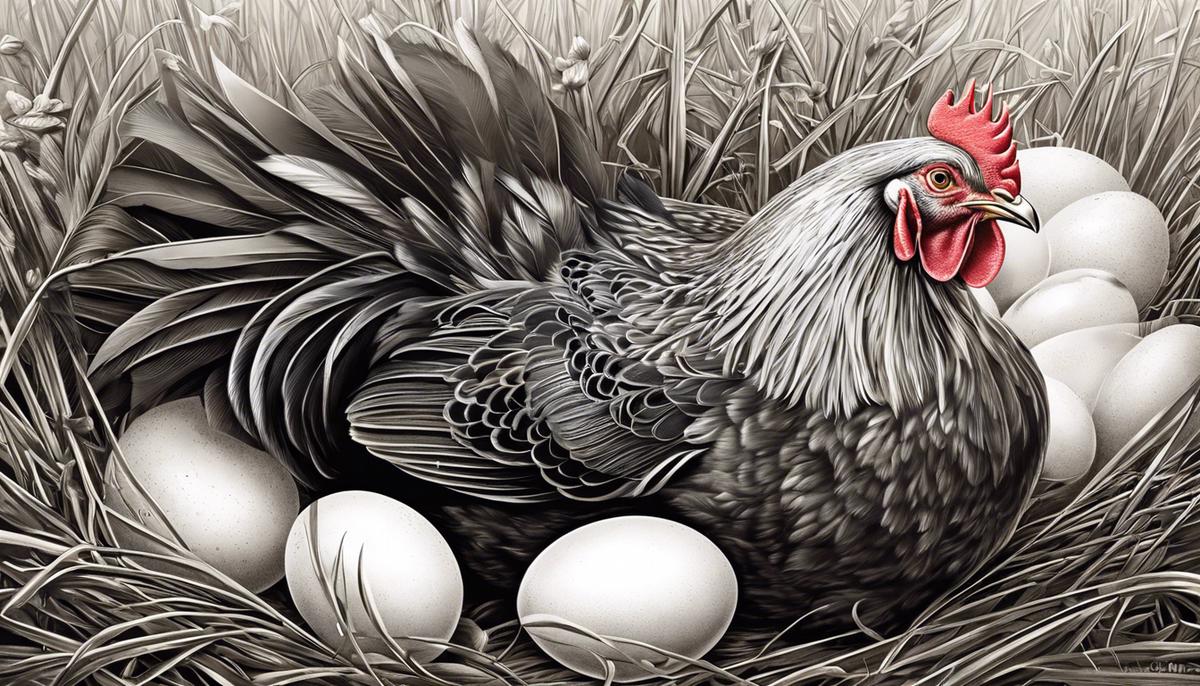
Identifying High-Producing Breeds
Egg-Xtraordinary Egg Layers: Top Breeds for Prolific Production

Caring for Your Laying Hens
Laying Hens: Proper Care Techniques for Enhanced Egg Production
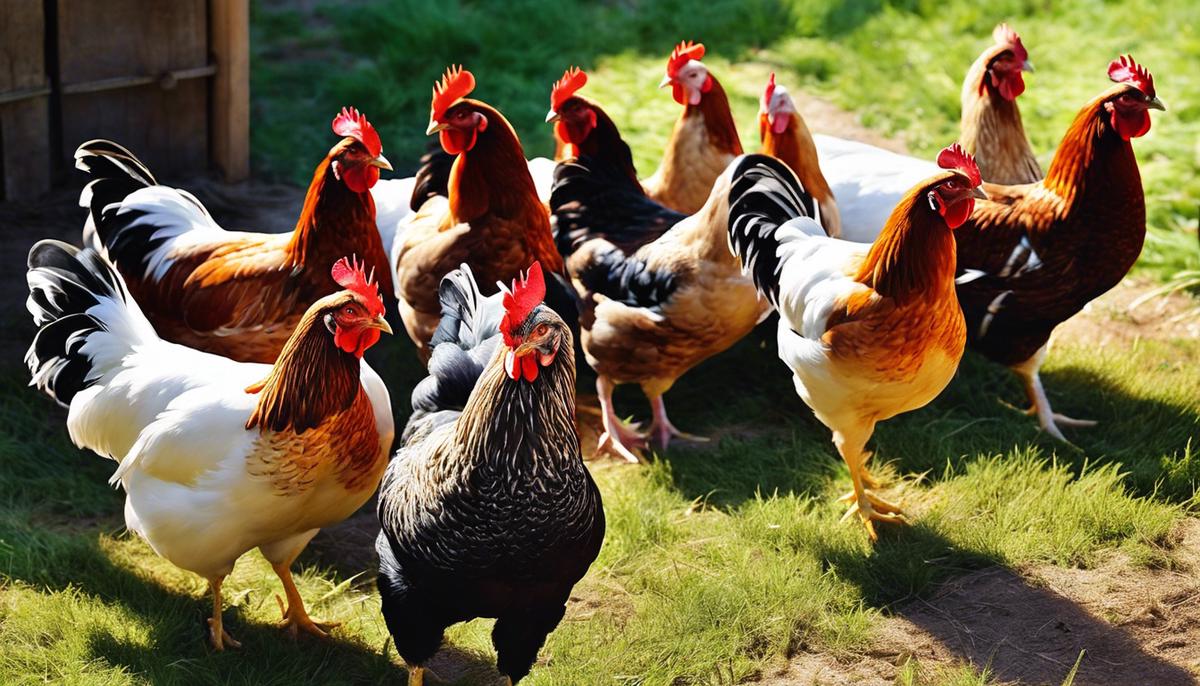
Strategies for Maximising Egg Production
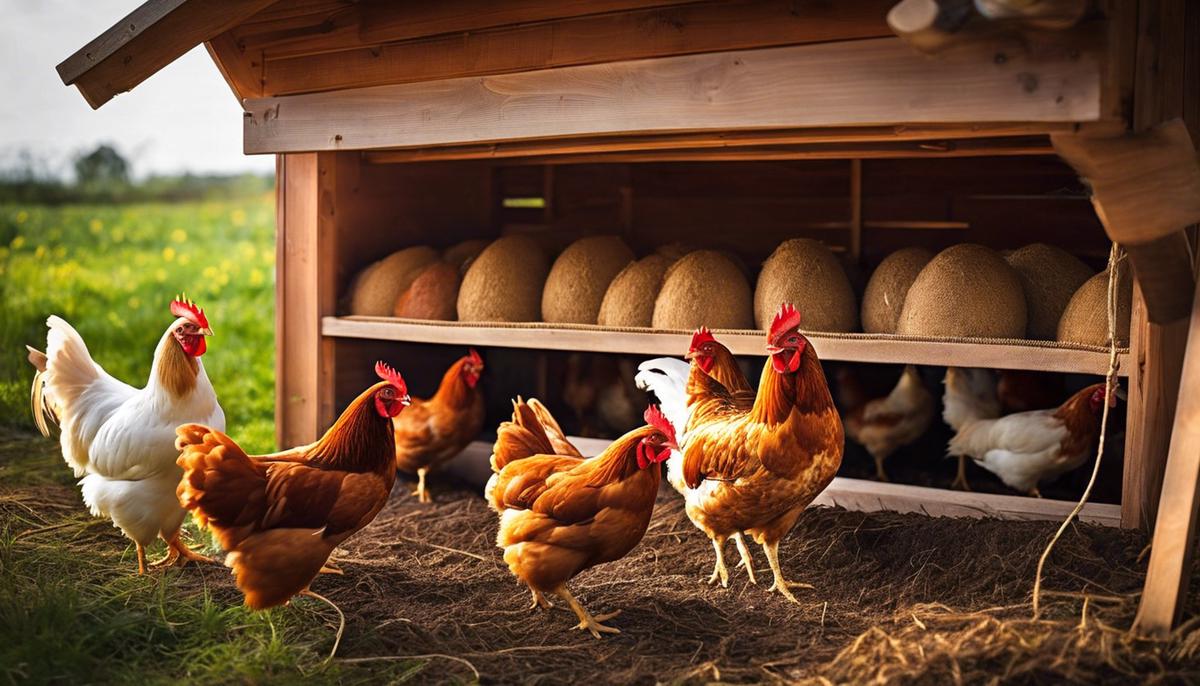
What makes chickens lay more eggs?
Nutritional Requirements and Diet Optimization | Laying Hens
Nutritional Cornerstones for Optimal Egg Production in Poultry

Environmental and Housing Conditions | Laying Hens
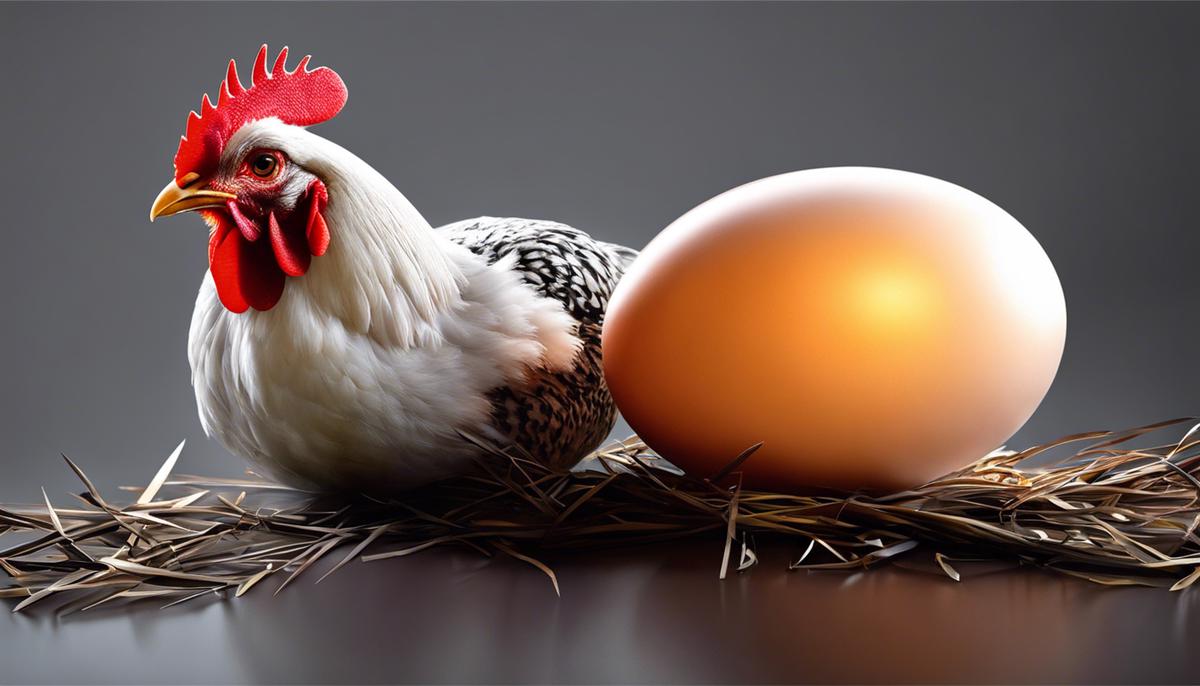
Health Management and Disease Prevention | Laying Hens
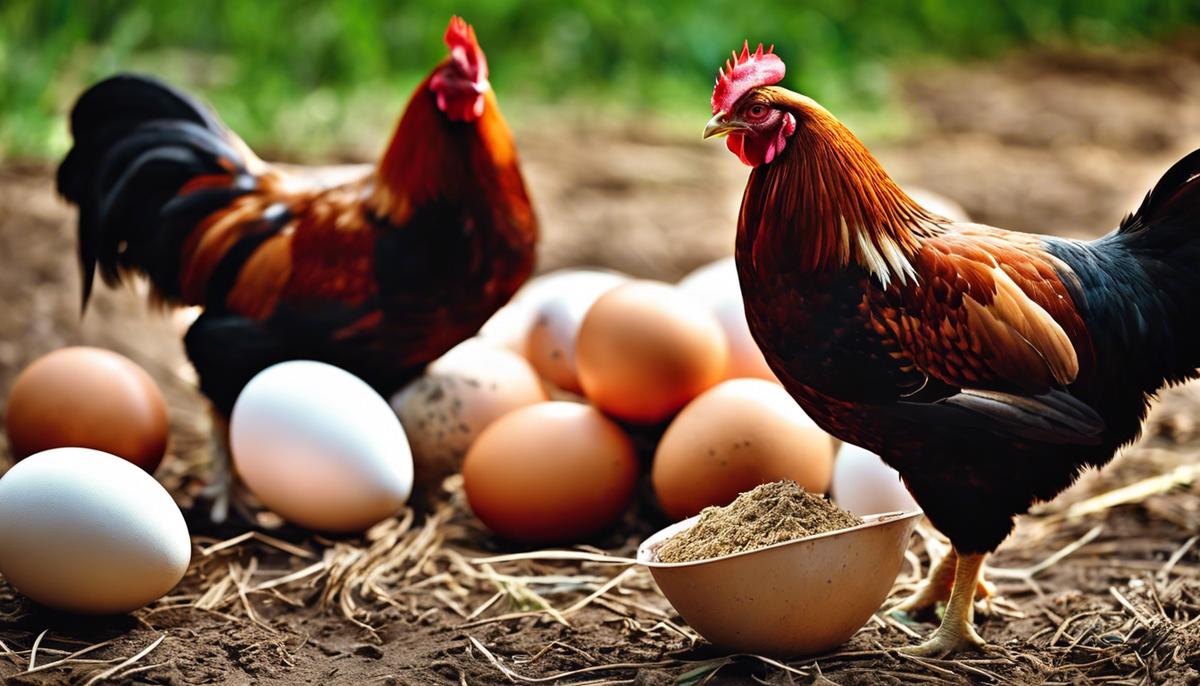
Genetic Selection and Breeding | Laying Hens
The Interplay of Genetic Selection and the Egg-Laying Capacity of Chickens
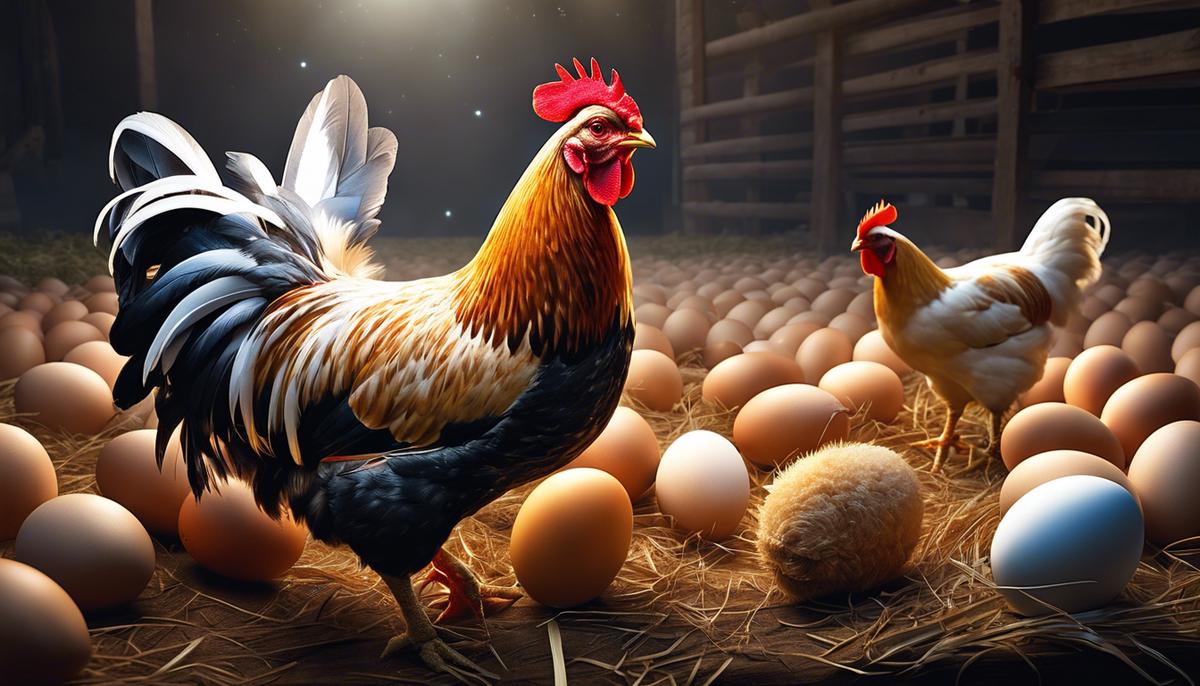
Stress Factors and Behavioral Interventions | Laying Hens
Stress Factors Impacting Egg Production and Mitigation Via Behavioral Interventions